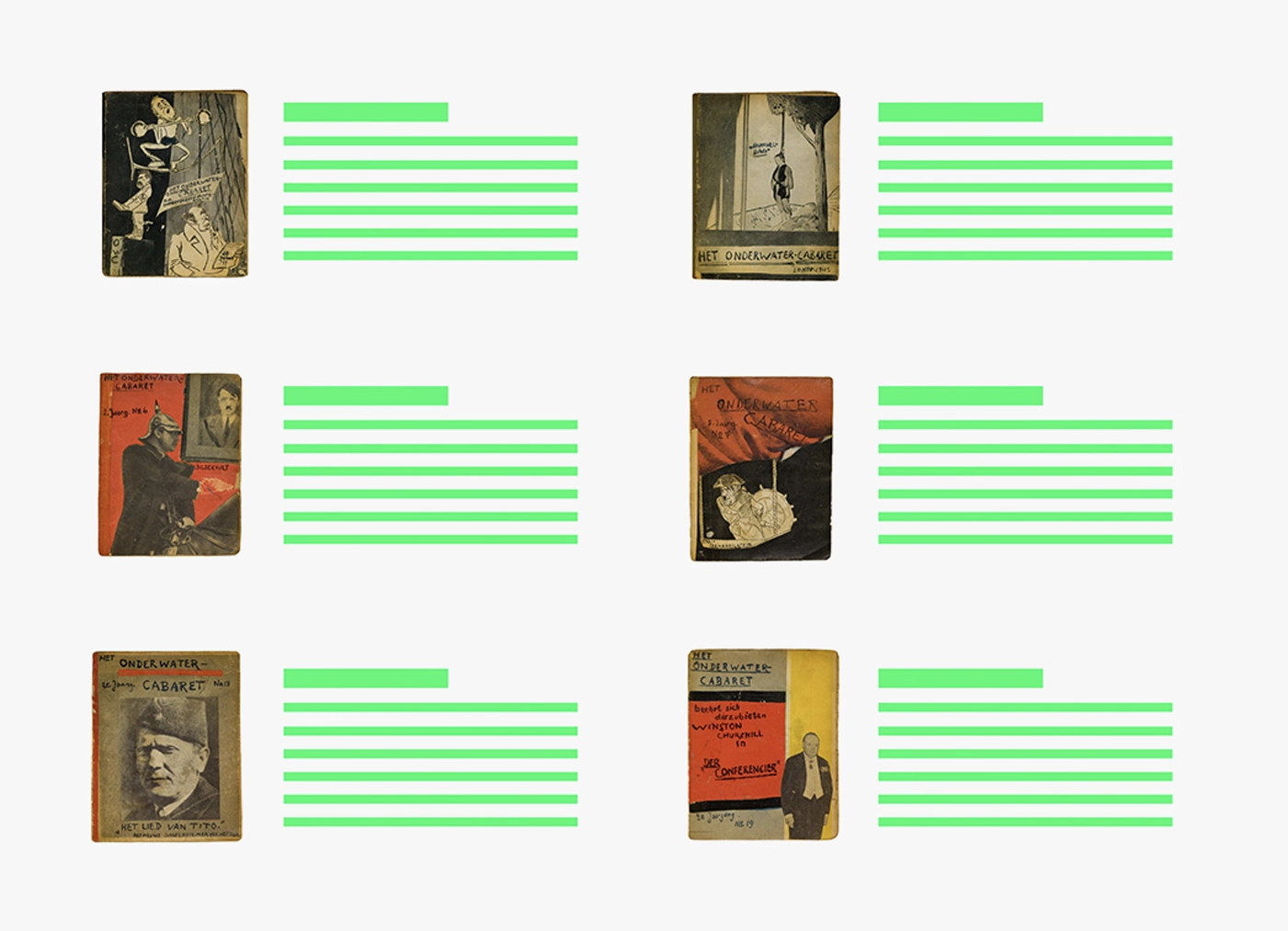


March 18, 1944
Introduction to the content
The Song is over … describes how in its quest for expansion, propaganda had described “the German war machine’s” relentless extension to the East. After the conquests of cities and territorial gains too numerous to name, the Germans had supposedly “checkmated” the Russians, whose land was theirs for the taking. No such luck! A reversal has taken place, and Bloch cites several newspaper reports from the Nazi press which sing a completely different tune. These are pasted into his magazine as evidence of a shift in tone, as they report on widespread evacuations of Germans from numerous Russian villages they occupied.
The Bogeyman of the Third Reich (song) comments on two news articles which paint a scary picture for the Nazis. First: the Soviet Union has changed the lyrics to the Internationale, which is now a hymn. This is a genius propaganda move worthy of Goebbels who contends in the second article, that the cunning Jewish propaganda machine may fool people into believing the Russians are not evil. This puts Germany in grave danger of defeat. If that occurs it will unleash an unstoppable wave of filth from the east washing over Europe. Bloch amplifies Goebbels’ dire warnings to ridicule the premise: that the Russians are inherently evil. “those who know the Krauts don’t believe this story.” It’s obvious that “fascism is the evil.”
Two news items inspire Germany’s coolies. One acknowledges the poor conditions of the work camps where guest workers live, the other refers to unskilled laborers, in Russia many of whom were Chinese “coolies.” Like Russia, Germany, “recruited” disadvantaged populations from occupied territories under duress and treated them disrespectfully, maintaining poor living conditions and intimidating management techniques reminiscent of the slave trade. Coolies did back-breaking labor — mainly working on plantations, in coal mines, as porters, and other low-paid physical labor. Curt Bloch uses this derogatory term to fire up the disgruntled workers who’ve been forced into labor in Germany’s war industry under poor conditions – “far away from wife and child and home.” But “resistance and hatred, they grow.” Curt Bloch calls out to these workers: “German coolies, show your strength!”
The Lying film “Monte Cassino” describes the battle raging at the beautiful Monte Cassino Abbey, which is eventually destroyed in allied bombings. A work of propaganda, it recounts the ongoing story of a battle that – at the time of the writing—still raged in Italy. Allied forces made repeated attempts to capture the Abbey from the Germans in a battle that lasted from January to May 1944. Ultimately the heavily damaged monastery was captured by American and Polish soldiers. The contradictory press reports that Bloch pastes between his rhymes to juxtapose the propaganda of the Third Reich with its deeds. Goebbels aims to portray the Allies as destructive aggressors and the Germans as innocent friends of culture who are horrified by such destruction.